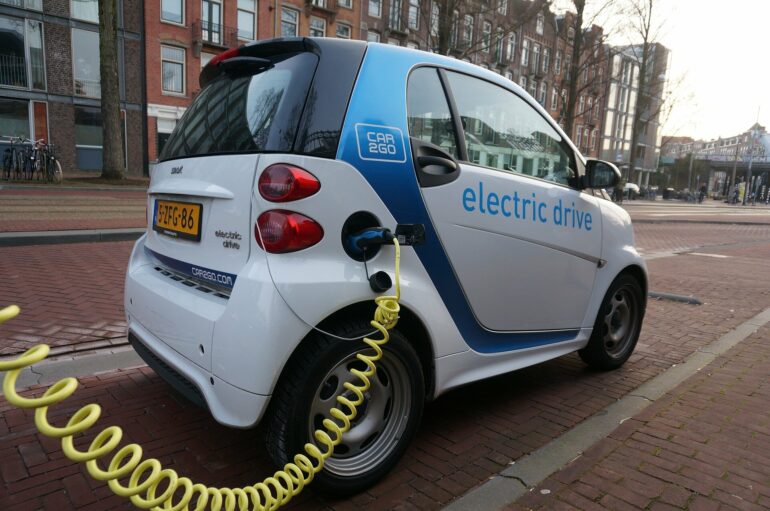One of the most critical safety concerns for electric vehicles is keeping their batteries cool, as temperature spikes can lead to dangerous consequences.
New research led by a University of Arizona doctoral student proposes a way to predict and prevent temperature spikes in the lithium-ion batteries commonly used to power such vehicles.
The paper, “Advancing Battery Safety,” led by College of Engineering doctoral student Basab Goswami, is published in the Journal of Power Sources.
Goswami and his adviser, aerospace and mechanical engineering professor and project principal investigator Vitaliy Yurkiv, developed a framework that uses multiphysics and machine learning models to sense, predict and identify lithium-ion battery overheating, known as thermal runaway.
In the future, this framework could be integrated into an electric vehicle’s battery management system to stop a battery from overheating, thereby protecting drivers and passengers, Goswami said.
“We need to move to green energy,” Goswami said, “but there are safety concerns associated with lithium-ion batteries.”
Using the past to predict the future
Thermal runaway can be extremely dangerous and difficult to predict.
“The temperature in a battery will escalate in an exponential manner and it will cause fire,” Goswami said.
An electric vehicle battery pack is comprised of closely connected battery “cells.” Today’s electric vehicles can have more than 1,000 cells in each battery pack. If thermal runaway occurs in one cell, nearby cells are highly likely to heat, too, creating a domino effect. If that happens, the entire battery pack of the electric vehicle could explode, Goswami said.
To prevent this, the researchers propose using thermal sensors—wrapped around battery cells—that feed historical temperature data into a machine-learning algorithm to predict future temperatures. The algorithm predicts when and where a runaway event is likely to start.
“If we know the location of the hotspot (the beginning of thermal runaway), we can have some solutions to stop the battery before it reaches that critical stage,” Goswami said.
Yurkiv said he was impressed by the accuracy of Goswami’s algorithm. Prior to his research, machine learning models had not been used to predict thermal runaway.
“We didn’t expect that machine learning would be so superior to predict thermocouple temperature and location of hotspots so precisely,” Yurkiv said. “No human would ever be able to do that.”
The research builds on a paper Goswami and Yurkiv published in January investigating the use of thermal imaging to predict runaway, which would require heavy imaging equipment constantly taking photos for review.
The solution Goswami and Yurkiv identify in their latest paper is lighter and more cost-effective.
Meeting a global demand
Goswami’s research was published at an important point in American car manufacturing history. In July, the same month the paper was published, the Biden administration announced a $1.7 billion investment in electric vehicle manufacturing across eight states. In 2023, global electric vehicle sales increased 35% from 2022.
As demand rises, safety measures are essential to the electric vehicle movement, Goswami said.
“Many people are still hesitant to embrace batteries due to various safety concerns,” he said. “To gain widespread acceptance, it’s crucial for the public to know that ongoing research is actively addressing these critical safety issues.”
More information:
Advancing battery safety: Integrating multiphysics and machine learning for thermal runaway prediction in lithium-ion battery module, Journal of Power Sources (2024).
Provided by
University of Arizona
Citation:
Preventing car battery fires with help from machine learning (2024, September 4)



